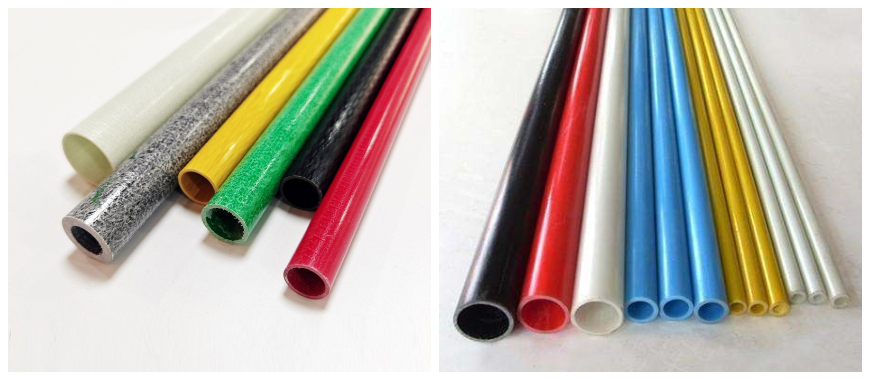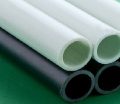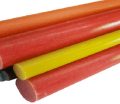
Sanding a fiberglass tub is an essential step in maintaining its appearance and ensuring long-term durability. When you sandpaper fiberglass tub, you help remove surface imperfections, such as scratches and stains, that can accumulate over time. This process also prepares the surface for refinishing or re-coating, allowing paint or gel coats to adhere better. Fiberglass is a strong and resilient material, but it still requires periodic sanding to keep its smooth, glossy finish intact. Regular sanding also helps prevent the build-up of grime and soap scum, which can dull the surface. By sanding your fiberglass tub correctly, you can restore its shine and prolong its lifespan, making it look as good as new for years to come.
How About Sandpaper Fiberglass Tub Maintenance
The sandpaper fiberglass tub stands out as a versatile and durable solution for various applications, from automotive to household and marine industries. Proper maintenance is essential to ensure it retains its functionality and aesthetic appeal. Sanding is one of the key methods to repair imperfections, maintain smooth surfaces, and prepare the tub for refinishing. With the right approach, users can restore the sandpaper fiberglass tub to like-new condition while extending its lifespan.
Fiberglass is naturally resistant to many environmental factors, but over time, scratches, cracks, or discoloration can occur. These imperfections are most effectively addressed through sanding, a process that removes surface blemishes and prepares the material for repairs or refinishing. The sandpaper fiberglass tub benefits from this method, allowing for seamless restoration without compromising the tub’s strength or integrity.
During the sanding process, selecting the appropriate grit size is crucial. Coarse sandpaper removes deeper scratches and imperfections, while finer grit smooths the surface to prepare it for polishing. This step-by-step process ensures an even finish, leaving the sandpaper fiberglass tub ready for use or additional modifications. The gel-coat surface, a key feature of fiberglass tubs, benefits particularly from this approach as it restores the glossy, polished appearance that enhances the tub’s aesthetic appeal.
Benefits of Sanding the Sandpaper Fiberglass Tub
- Restoration of Surface Integrity:
Sanding repairs scratches, chips, and surface wear, restoring the tub’s structural and visual appeal. - Improved Adhesion for Repairs:
By creating a smooth surface, sanding enhances the adhesion of repair kits or paint, ensuring durability and a seamless finish. - Customizable Finishes:
A sandpaper fiberglass tub can be prepared for unique paint jobs or textures, allowing for highly personalized designs. - Increased Longevity:
Addressing surface imperfections early prevents further damage, extending the tub’s functional life. - Enhanced Safety:
Smoothing out rough areas reduces the risk of splinters or sharp edges, making the tub safer for use in various environments. - Protective Gear is Essential:
Always wear gloves, goggles, and a respirator to safeguard against fiberglass dust and debris, which can irritate the skin, eyes, and respiratory system. - Work in a Ventilated Space:
Proper ventilation prevents the buildup of fiberglass dust in the air, reducing health risks during sanding. - Choose Appropriate Sandpaper:
Use coarse grit for initial sanding and fine grit for polishing to minimize dust production and achieve a smoother finish. - Avoid Excessive Force:
Gentle, even strokes are more effective than applying heavy pressure, which can damage the surface or create uneven sanding marks. - Thorough Cleanup:
After sanding, clean the workspace thoroughly to remove any remaining fiberglass particles, ensuring a safe environment for future use.
Repairing the Sandpaper Fiberglass Tub with Precision
Repairing a sandpaper fiberglass tub requires a methodical approach to ensure both functionality and aesthetic restoration. This begins with identifying the type and severity of damage, which will dictate the tools and materials required for the repair process.
Shallow scratches can often be resolved through sanding alone. Starting with medium-grit sandpaper, the affected area is carefully smoothed until the scratch is no longer visible. Progressing to finer grits ensures a polished finish that blends seamlessly with the surrounding surface.
For deeper scratches or cracks, a fiberglass repair kit is necessary. The repair begins with filling the damaged area using a resin and hardener mixture. After curing, sanding smooths the patched section to match the rest of the tub. This process is completed with polishing compounds to restore the tub’s glossy surface, ensuring a flawless result.
The sandpaper fiberglass tub is highly responsive to these repair techniques, making it possible to maintain its structural integrity and aesthetic value over time. Regular inspections and prompt repairs are essential for prolonging the tub’s lifespan, particularly in high-use environments.
Why the Sandpaper Fiberglass Tub is Ideal for Refinishing
The sandpaper fiberglass tub’s construction makes it an excellent candidate for refinishing, whether for aesthetic upgrades or functional repairs. Its gel-coated surface responds well to sanding, allowing for easy preparation and a professional finish.
Refinishing begins with sanding to create a smooth, even base. This process removes old finishes, discoloration, or minor surface flaws, providing a clean slate for new applications. Once the surface is prepared, the tub can be painted, textured, or polished to achieve the desired appearance.
The versatility of the sandpaper fiberglass tub also allows for customization beyond refinishing. Additional features, such as reinforced mounting points or integrated storage, can be added during the restoration process. These modifications ensure that the tub not only looks great but also meets specific functional requirements.
Polishing compounds are the final step in refinishing, bringing out the tub’s shine and enhancing its visual appeal. This combination of sanding, customization, and polishing makes the sandpaper fiberglass tub a versatile and durable choice for a variety of applications.
Real-World Applications of the Sandpaper Fiberglass Tub
- Home Renovations:
A homeowner restores an aging fiberglass bathtub with sanding and polishing, achieving a refreshed and modern look. - Marine Repairs:
A boat owner maintains their vessel’s fiberglass components with regular sanding and refinishing, ensuring optimal performance and appearance. - Automotive Projects:
A car enthusiast repairs fiberglass panels on a vehicle, using sandpaper and polishing compounds to prepare the surface for a custom paint job. - Industrial Maintenance:
Fiberglass parts in industrial machinery are regularly sanded and repaired to prevent wear and extend their operational lifespan. - DIY Creations:
A DIY hobbyist uses a sandpaper fiberglass tub to create custom furniture, sanding the surfaces for a professional finish.
The sandpaper fiberglass tub offers unmatched versatility and durability. Whether for refinishing, repairing, or creating, proper sanding techniques and maintenance practices ensure a long-lasting and visually appealing result. At GangLong Fiberglass, we provide top-quality products and expert guidance to help users achieve the best outcomes for their projects. The sandpaper fiberglass tub is a reliable choice for professionals and DIY enthusiasts alike, delivering exceptional performance and customization potential.
Use Toothpaste on Fiberglass Tub’s Benefit
What Is the Sandpaper Fiberglass Tub and Why It Matters
The sandpaper fiberglass tub is a versatile and highly durable component used in various industries, including residential, automotive, and marine sectors. Known for its resilience and adaptability, it is designed to handle wear and tear while maintaining its functionality and aesthetic appeal. One of the most important aspects of maintaining a sandpaper fiberglass tub is sanding, which is crucial for restoring its surface, repairing imperfections, and preparing it for refinishing. With proper sanding techniques, this material can retain its integrity and shine for many years.
Fiberglass is resistant to corrosion, rust, and most environmental factors, making it ideal for long-term use. However, like any material, it can accumulate scratches, chips, or discoloration over time. The sandpaper fiberglass tub is particularly well-suited for repairs and refinishing, as its gel-coated surface responds well to sanding and polishing. By removing surface imperfections, sanding not only restores the tub’s appearance but also enhances its functionality by preventing further damage.
Sanding a sandpaper fiberglass tub requires precision and care. The process begins with selecting the right grit of sandpaper to address the specific issue. Coarse grit is used to tackle deep scratches or blemishes, while finer grits are used for smoothing and polishing. Wet sanding is often recommended for fiberglass, as it reduces dust buildup, minimizes overheating, and results in a smoother finish. When done correctly, sanding transforms the fiberglass tub into a flawless, polished surface that is ready for painting or other treatments.
Benefits of Sanding the Sandpaper Fiberglass Tub
- Restores Surface Smoothness:
Sanding restores the smooth, glossy surface of a sandpaper fiberglass tub by eliminating scratches, chips, and other surface imperfections. A smooth surface not only looks better but also improves the functionality of the tub by creating an even base for further treatments. For example, a polished finish enhances the tub’s resistance to water and debris, reducing the need for frequent cleaning. - Prepares for Repairs:
When using a fiberglass repair kit, sanding is an essential step. A properly sanded surface ensures that the repair material adheres securely, creating a seamless and long-lasting bond. This preparation step is especially important for areas with deep scratches or cracks, as it strengthens the repaired section and prevents future issues. - Improves Aesthetic Appeal:
A sandpaper fiberglass tub benefits greatly from sanding, as it enhances its visual appeal by removing discoloration and restoring its shine. This improvement is particularly valuable for homeowners or businesses that prioritize aesthetics, such as in bathrooms or showrooms. Polishing after sanding adds a professional-grade finish, making the tub look brand new. - Extends Lifespan:
Regular sanding prevents minor imperfections from developing into major structural issues. By addressing surface damage early, the overall durability of the tub is enhanced, ensuring it can withstand years of use without requiring significant repairs or replacement. - Ensures Safety:
Sanding smooths out sharp edges or rough patches that could cause injury. This is especially important in household or industrial settings where safety is a top priority. A well-sanded fiberglass tub reduces the risk of splinters and enhances the user experience.
Master Wet Sanding Fiberglass Tub for a Perfect Finish
The Sanding Process: Step-by-Step Guide
Sanding a sandpaper fiberglass tub involves multiple steps to achieve a polished and flawless surface. Each step plays a crucial role in ensuring the effectiveness of the process and the quality of the final result.
The first step is to clean the tub thoroughly. Dirt, grease, and debris must be removed using a mild detergent and water. Cleaning ensures that the surface is free of contaminants that could interfere with the sanding process. Dry the tub completely to prepare it for the next step.
Next, mask off any areas that you do not want to sand. Using painter’s tape, protect edges, fixtures, or sections that are in good condition. Masking ensures that the sanding process remains focused on the areas that need attention, resulting in a cleaner finish.
Select the appropriate sandpaper grit for the task. Coarse grit (80-120) is ideal for deep scratches or surface irregularities, while finer grits (400-1000) are used for smoothing and polishing. Always start with a coarser grit and gradually move to finer grits to achieve a polished result.
When sanding, use long, even strokes to maintain consistency. Sand in the direction of the fiberglass grain to avoid uneven patterns. A sanding block or pad can be used to distribute pressure evenly, reducing the risk of gouges or excessive abrasion. Wet sanding is recommended for fiberglass, as it minimizes dust and prevents overheating.
After sanding, rinse the tub thoroughly to remove residue. Inspect the surface for any remaining imperfections and repeat the process as needed. Once the desired finish is achieved, the tub can be polished, painted, or treated with protective coatings to enhance its appearance and durability further.
Tips for Effective Sanding and Avoiding Common Mistakes
- Avoid Over-Sanding:
Over-sanding can damage the fiberglass surface, creating gouges or weakening the material. Use light, consistent pressure and avoid staying in one area for too long. Let the sandpaper do the work instead of applying excessive force. - Use a Sanding Block or Pad:
A sanding block helps distribute pressure evenly across the surface, preventing uneven marks and ensuring a smooth finish. It also makes the sanding process more efficient by maintaining contact with the surface. - Inspect the Surface Regularly:
During the sanding process, periodically check the tub for deeper damage or imperfections that may require additional attention. Early detection of cracks or weak spots can prevent more extensive repairs later. - Wet Sand for Best Results:
Wet sanding reduces dust and prevents the sandpaper from clogging, resulting in a smoother finish. It also minimizes the risk of overheating the surface, which can cause discoloration or warping. - Choose the Right Sandpaper Grit:
Starting with coarse grit and gradually progressing to finer grits ensures a polished and professional result. Skipping grits or using the wrong grit can lead to unsatisfactory outcomes and require additional work.
Real-World Applications of the Sandpaper Fiberglass Tub
- Residential Renovations:
A homeowner restores a scratched fiberglass bathtub using sanding techniques, achieving a modern and polished look. The process eliminates imperfections and prepares the tub for a fresh coat of paint, enhancing the overall bathroom aesthetic. - Marine Maintenance:
A boat owner sands and polishes the fiberglass hull to remove scratches caused by prolonged exposure to rough waters. The process improves the vessel’s hydrodynamics, reducing drag and increasing fuel efficiency. - Automotive Refinishing:
A car enthusiast repairs fiberglass body panels with sanding, creating a flawless surface for a custom paint job. The result is a vehicle with a sleek, showroom-quality finish. - Industrial Repairs:
Fiberglass components in industrial machinery are sanded regularly to maintain their integrity and performance. Proper sanding prevents wear and tear, ensuring reliable operation in demanding environments. - DIY Projects:
A DIY hobbyist transforms a sandpaper fiberglass tub into a unique piece of furniture by sanding it to perfection. The polished surface enhances the final product’s appearance and usability.
The sandpaper fiberglass tub is a highly versatile and durable material that responds well to proper sanding and maintenance techniques. By addressing imperfections and enhancing its finish, sanding ensures the tub remains functional and visually appealing for years. At GangLong Fiberglass, we specialize in providing high-quality fiberglass products and expert advice to help you achieve the best results for your projects. The sandpaper fiberglass tub is a testament to the durability, adaptability, and aesthetic potential of fiberglass, making it an essential choice for various applications.
Choosing The Right Fiberglass Rods And Plastic Tubes
FAQs about Sandpaper Fiberglass Tub
Yes, you can sand a fiberglass bathtub, but it requires care and the right techniques to avoid damaging the surface. Sanding is often necessary if you want to remove imperfections like scratches, stains, or old paint, or to prepare the surface for a new coat of finish. When sanding fiberglass, it’s important to use a fine-grit sandpaper, typically between 220 and 400 grit, to ensure a smooth finish without leaving deep scratches. For more significant imperfections, you can start with a coarser grit (around 120-150 grit), but always finish with a finer grit for best results. Be cautious not to sand too aggressively, as fiberglass is prone to scratching and damage if over-sanded. After sanding, you should clean the surface thoroughly to remove dust and debris before applying any new finishes or sealants.
Yes, sandpaper can be used on fiberglass, but it’s important to choose the right type of sandpaper for the job. Fiberglass is a tough material, and using the wrong grit or sanding too aggressively can cause surface damage or uneven results. Typically, you’ll want to use sandpaper with a grit range of 220 to 400 for sanding fiberglass surfaces like bathtubs, as this will allow you to smooth out the surface without damaging it. Coarse sandpaper, such as 120 or 150 grit, can be used for deeper scratches or rough areas, but it should be followed up with finer sandpaper for a smooth, uniform finish. It’s essential to sand lightly and evenly to avoid creating scratches or gouges in the fiberglass. After sanding, always clean the surface properly to remove sanding dust, which can interfere with any subsequent repairs or refinishing.
For sanding a fiberglass bathtub, you’ll want to use sandpaper with a fine grit to avoid scratching or damaging the surface. Generally, sandpaper with a grit of 220 to 400 is ideal for most refinishing and repair tasks. If you are removing minor scratches or preparing the surface for a new layer of finish or paint, start with 220 grit sandpaper and gradually work up to a finer grit, like 400. If you’re addressing deeper scratches or rough patches, you may want to start with a coarser grit like 120 or 150 but be sure to finish with a fine grit to smooth the surface. Always use wet sanding if possible, as it helps reduce dust and prevents overheating, which can damage the fiberglass. Be gentle and avoid applying too much pressure when sanding, as this can lead to gouging or creating more visible scratches.

As the editor of GangLong Fiberglass, I have years of experience and in-depth research, focusing on cable tray products, fiberglass solutions, and grille systems. I incorporate years of industry insights and practical experience into every content, committed to promoting the progress of the industry. At GangLong Fiberglass, my commitment is reflected in every product, from innovative cable trays to durable fiberglass solutions and sturdy grille systems. As an authoritative voice in the industry, my goal is to provide valuable information to professionals and businesses and promote forward-looking solutions.


